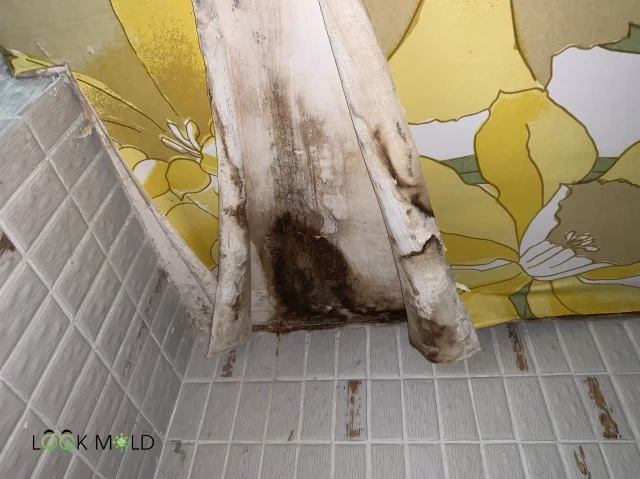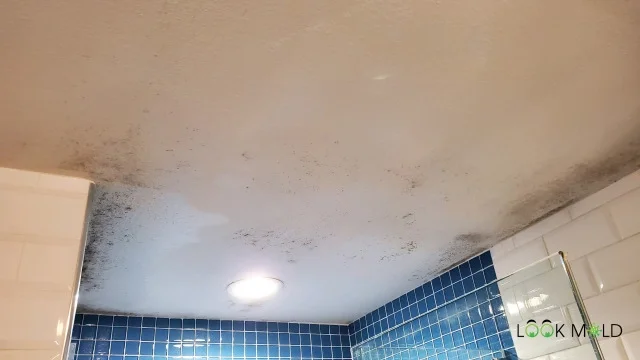Professional Mold Remediation Services
Don't Let Toxic Mold Put Your Family's Health at Risk
Stop mold damage before it spreads. Call now for a free, no-obligation estimate from a local remediation expert.
Free Estimate · Zero Obligation · Available 24/7
How To Clean Mold From The Shower
If you’ve spotted black spots or discolored patches forming on your shower ceiling, you’re not alone — and yes, it could be mold.
Most of the time, ceiling mold in the bathroom is caused by poor ventilation and condensation, not something dangerous like toxic black mold. But the key is knowing how to clean it safely and make sure it doesn’t come back.
This guide walks you through it step by step, straight from a licensed mold assessor.
🔍 What Causes Mold on the Shower Ceiling?
Moisture + Poor Ventilation = Mold
Your shower creates steam. When warm, humid air hits a cooler surface like the ceiling — boom, condensation forms. That moisture gives mold exactly what it needs to grow.
Common Causes:
- Weak or no exhaust fan
- Paint not designed for bathrooms
- Leaky attic or roof above the ceiling
- Shower doors left closed after use
- Warm, damp air trapped in a small space
"Mold thrives in moist environments, especially where warm air meets cool surfaces." — EPA
🎯 How to Tell If It’s Just Surface Mold
- Surface mold is common and usually shows up as black or gray spots on paint.
- If it wipes off easily and the ceiling isn’t soft or bulging — it’s surface-level.
- If there’s discoloration that keeps coming back or a musty smell in the attic above — you might have hidden mold from a leak.
🛑 Don’t ignore it if:
- The ceiling feels soggy
- There’s visible warping or crumbling
- You suspect a roof or pipe leak above

🦠 What About Black Mold on the Shower Ceiling?
Here’s the truth:
The dark mold you see in the shower isn’t automatically Stachybotrys chartarum (aka “toxic black mold”). That type only grows when there’s consistent water damage, like a plumbing leak from above.
So if there’s no leak — you probably don’t have toxic black mold.
But any mold can trigger allergies, asthma, or sinus irritation in sensitive people.
“Mold can cause health effects. It produces allergens, irritants, and sometimes toxins.” — CDC

🧼 How to Clean Mold from the Shower Ceiling
🧰 What You’ll Need:
- Anti-microbial mold cleaner (EPA-registered like Concrobium or Benefect)
- White vinegar (optional)
- Protective gloves
- N95 mask or respirator
- Safety goggles
- Microfiber cloth or sponge
- Step ladder
🧽 Cleaning Steps
Step 1: Ventilate the Area
Turn on the bathroom fan and open windows or doors.
Step 2: Apply Your Mold Cleaner
Spray a light layer of mold cleaner or vinegar directly on the ceiling mold. Let it sit for 10 minutes.
Step 3: Wipe It Off
Gently scrub the moldy area with your cloth or sponge. Don’t oversaturate the ceiling — moisture can make it worse.
Step 4: Dry the Area Completely
Use a clean towel or let a fan run until the ceiling is fully dry.
🧠 Pro Tip: Avoid using bleach. It can make things look clean but doesn’t kill mold at the root, especially on porous surfaces.
🎨 Repainting with Mold-Resistant Paint
If stains remain after cleaning, you can repaint using anti-microbial paint like:
- Zinsser Perma-White
- KILZ Mold & Mildew Resistant
- Benjamin Moore Aura Bath & Spa
Just make sure the area is completely dry and primed.
🚫 How to Prevent Mold from Coming Back
✅ After Every Shower:
- Run the exhaust fan for 30 minutes
- Crack open a window or door
- Squeegee excess water from walls
✅ Weekly:
- Spray a vinegar mist on ceilings and grout
- Wipe down wet surfaces
✅ Every 6 Months:
- Inspect attic and insulation above the shower
- Replace old caulk and failing grout
“Controlling moisture is the key to preventing mold.” — EPA Guide to Mold
🧯 When to Call a Pro
- Ceiling feels soft or crumbly
- You’ve had a leak above the shower
- Mold keeps coming back no matter what
In these cases, you may have hidden mold in the drywall or attic — and it’s time to bring in the pros.
❓ FAQ: Mold on Shower Ceilings
Is mold on the shower ceiling dangerous?
Usually no, but it can trigger allergies. If there’s a leak, it could be toxic mold.
Can I clean mold on the ceiling with vinegar?
Yes, for light surface mold. Use full-strength white vinegar in a spray bottle.
What kind of paint prevents mold on ceilings?
Look for paint with anti-microbial properties designed for high-humidity bathrooms.
What if mold keeps coming back after cleaning?
You may have a leak or poor ventilation. Have a mold professional inspect the area.
Explore Related Topics:
Notice an update we should make?
We strive for accuracy. Contact us here if you see incorrect or outdated info on this page.
